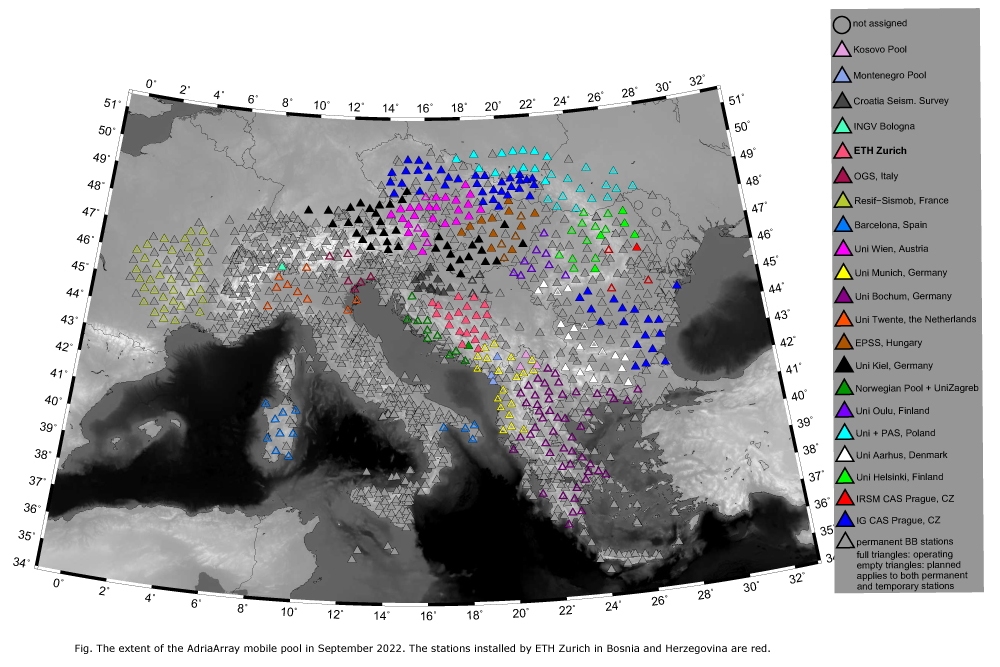2022-10-04
20 seismic stations in Bosnia and Herzegovina contribute to the initiative “AdriaArray”
The Swiss Seismological Service (SED) at ETH Zurich is now part of a new European initiative called AdriaArray. The international collaboration with teams across Europe aims to seek answers to fundamental questions related to plate geodynamics and the deformation of the Adriatic Plate. This microplate stretches throughout Eastern Italy and borders Switzerland and Austria, and goes all along the coast of the Balkan countries to Greece. Millions of years ago, the collision of the Adriatic and Eurasian plates led to the formation of the Alps. Up to now, the Adriatic Microplate constantly rotates counterclockwise against the Eurasian plate, which is the cause of many earthquakes in the Mediterranean region.
Read more...In the framework of the AdriaArray initiative, the research groups will apply different methods to unravel the structure of the crust, lower lithosphere, and upper mantle in the next four years. These efforts will increase the understanding of the European lithosphere's development which is particularly complex in the Mediterranean region due to the arrangement of the various microplates. To this end, a dense temporary network of seismic stations will soon cover the entire Adriatic plate in south-eastern Europe, providing data about the earth's movements. The SED contributes to this project by operating 20 broad-band temporary stations in Bosnia and Herzegovina, which the SED group deployed this summer together with local colleagues from Republika Srpska and the Federation of Bosnia and Herzegovina.
The AdriaArray initiative can be seen as a follow-up to the successful multidisciplinary AlpArray project that started in 2016. After the project's end in 2019, AlpArray has moved beyond the seismological experiment to a stage where the wealth of new data is being interpreted and debated. All the insights from this previous research will continue and further grow in the next four years of the AdriaArray's initiative.
